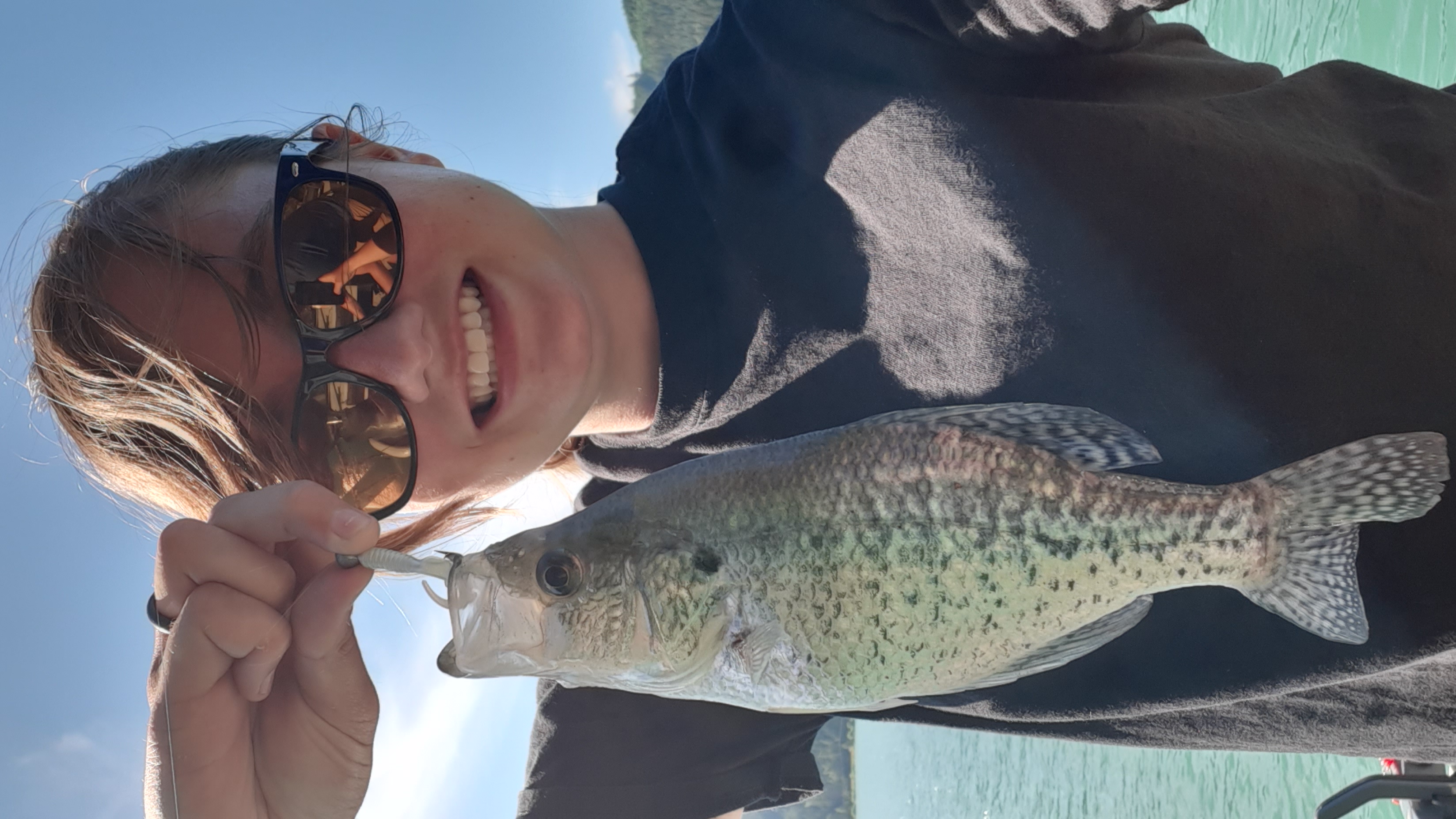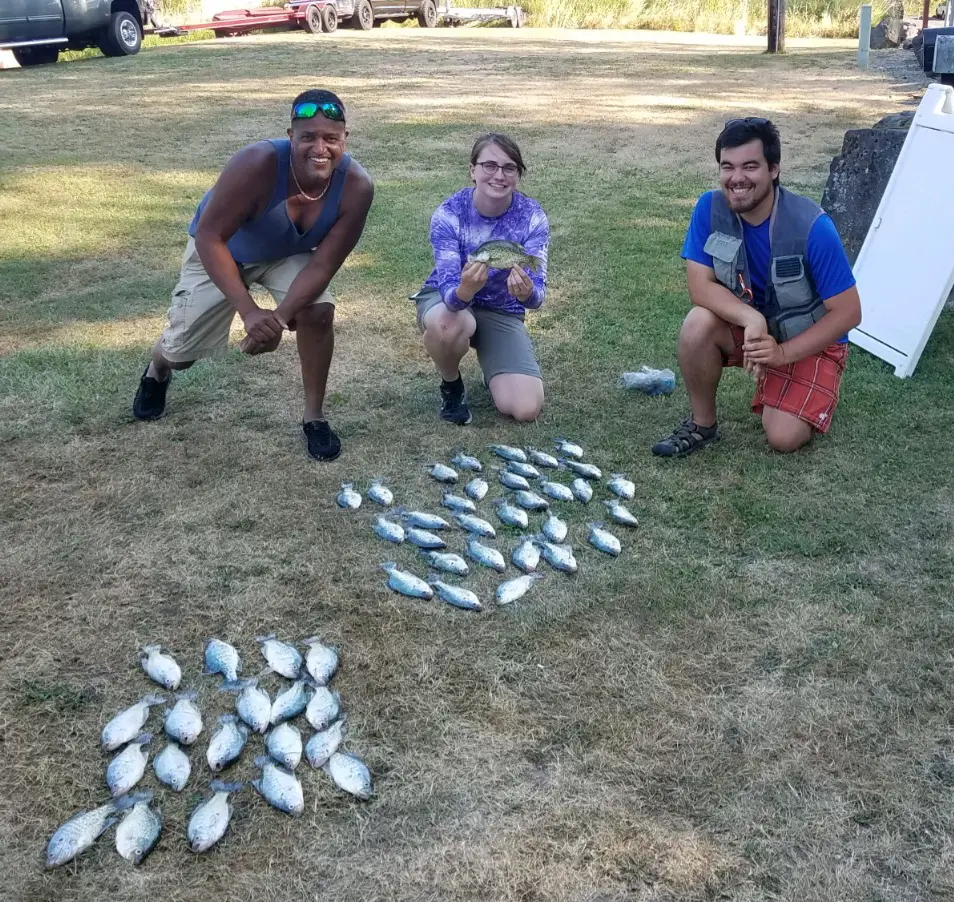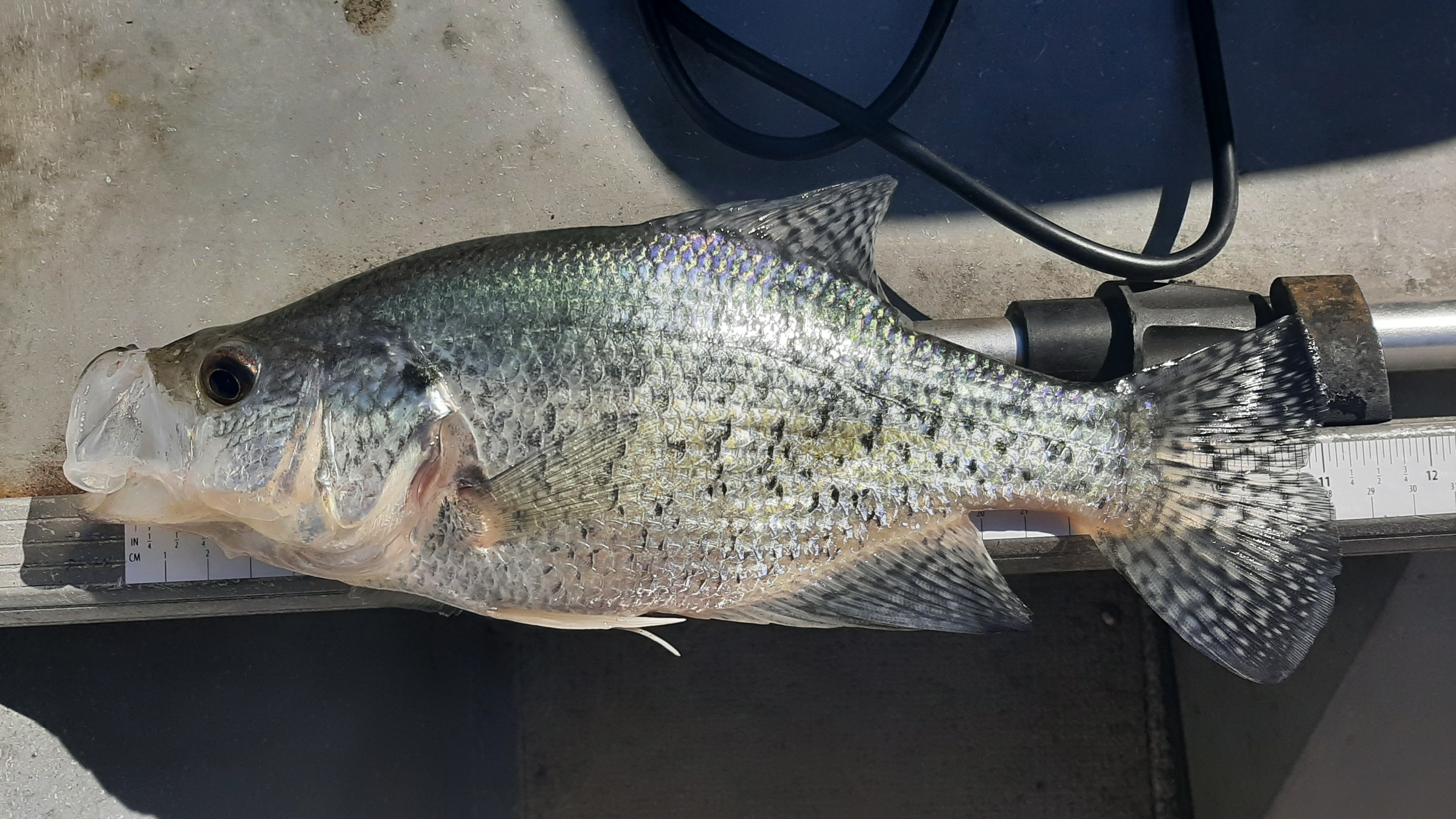Search
Latest Articles
Crappie Crackdown!
by Hannah Pennebaker , September 05, 2021
Techniques
By and large, jigging is the most popular technique to catch crappie. Crappie jigs come in a variety of sizes, from tiny 1/64 oz jigs to larger 1/8 oz lead. It's all about what depth the fish are holding at. In the summer, the fish are usually near the bottom. In deeper lakes, you'll need a heavier jig to reach the strike zone. You can get away with using 1/64 or 1/32 oz jigs in shallow lakes, or if the fish seem shy of larger offerings. Lighter jigs take longer to sink and get into the strike zone in deeper water, but that can work in your favor if you're not sure where the fish are holding yet. Once you've located the school, you can use a slip bobber or fixed bobber to make sure your jig gets straight back to that depth.
The number one rule of crappie fishing is to vary up your retrieve. Try a slow, steady retrieve on one cast. Then, if you don't get a bite, try a faster retrieve on the next cast. Keep changing it up until you find what works. Depending on the water temperature, the fish may be lethargic and more responsive to a slower moving presentation. If the fish are actively feeding, a faster retrieve will yield strikes more often than not.
It's a good idea to bring a wide selection of jigs, for two reasons. One, you might snag up or break off your line. Two, you never know what offering the crappie will key in on that day. Generally, you'll want to have several different colors of tubes and curly tail grubs, in a variety of weights.
As for your rod and reel, you'll want either an ultralight or light action setup. Crappie jigs are usually 1/8 oz or less, and a heavy pole just won't cast them well. Light braid or monofilament work just fine. I like ultralight setups because I can detect bites and snags more easily. Sensitivity is the key!
Locations
So you're at your favorite lake and you've selected the perfect crappie jig, but now you're wondering how to find the right place to target crappie. A good rule of thumb is to find structure. Search the edges of the lake for exposed trees or bushes sticking out of the water. You don't need a fancy fish finder to bring home some nice crappie, but electronics can certainly help you find the fish. Down scan and side scan features will reveal underwater structure that you might not see. Polarized sunglasses can help too! You'll probably lose a few jigs to tree branches, but keep in mind that if you're not snagging, you're not crappie fishing! Once you've landed one fish, drop right back to that same spot. Crappie are a schooling fish, so you'll likely keep catching more.
You can find crappie in most lakes around Western Washington. There is no bag or size limit on crappie, in general. However, check your regs because some lakes do impose size and creel limits. This is usually done to ensure a quality crappie population for years to come. In Western Washington, some good lakes to start with include Black Lake, Harts Lake, and Tanwax Lake. These are all lakes with healthy populations of good size fish. Some lakes have white crappie, others have black crappie. White crappie have more narrow, light colored bodies. Black crappie have striking green and black scales. Both types taste great on the frying pan!
Now is the perfect time to try your hand at crappie fishing. I highly recommend bleeding and icing your catch right away for the best meat quality. A word of caution for kids and beginner fishermen: crappie have sharp spines on their dorsal and anal fins. The best way to hold crappie is by grabbing their lower jaw with your fingertips, if you intend to keep them. If you're going to release them, "lipping" them like this can hurt their chances of survival, so it's best to wet your hands first and hold them gently in your hands. Lay the spines back as you hold on to the fish to prevent being stuck. With that being said, crappie fishing is a great way to introduce kids and fishermen of all ages to the sport. Crappie jigs are cheap, and the fish are eager biters. So go out there and catch a bunch of crappie!
Pictures:
1. These crappie are all destined for the dinner table!
2. This crappie was caught on a white curlytail grub.
3. A beautiful white crappie caught at Alder Lake.


